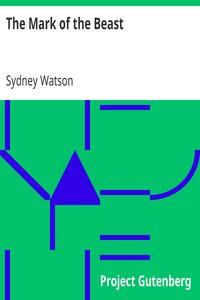Read this ebook for free! No credit card needed, absolutely nothing to pay.
Words: 66871 in 27 pages
This is an ebook sharing website. You can read the uploaded ebooks for free here. No credit cards needed, nothing to pay. If you want to own a digital copy of the ebook, or want to read offline with your favorite ebook-reader, then you can choose to buy and download the ebook.


: The Mark of the Beast by Watson Sydney - Christian fiction; Second Advent Fiction; Tribulation (Christian eschatology) Fiction
Appendix 265
Index 271
A Woman of the Fox Channel Tribe Frontispiece PAGE An Ancient Aboriginal Encampment 40 Part of an Eskimo Tribe of Women and Children 56 An Iglovegak or Eskimo Dwelling 64 An Eskimo Tupik 73 An Eskimo Snowhouse 76 An Eskimo Home 80 The Return of the Successful Seal Hunter in Springtime 88 Young Seal Hunting in May 92 Two Women in Summer Dress 96 A Young Wife with her Baby in her Hood 104 Eskimo Family Group 104 Models of Kayak, Umiak, and Okushuk 112 An Ancient Form of Sled 134 The Two Wives of a Hunter 144 An Eskimo Family outside their House 144 Preparing for a Long Winter Journey 160 A Native Chart 177 Asseak and his Wife 200 An Umiak or Family Boat 208 The Summer Tent or Tapik 208 A Conjuror's Mask 211 A Kagge or Singing House 218 A Kagge or Singing House 219 An Eskimo Woman of the Fox Channel Tribe 224 An Eskimo Summer Encampment 224 Specimens of Native Stone Carving 232 An Eskimo in his Kayak 240 Beginning to Build a Snowhouse 240 A Wolf Trap 255 An Eskimo Trap for Bears, Foxes or Wolves 257 A Seagull Trap 261
THE ESKIMO OF BAFFIN LAND
THE VOYAGE TO THE ARCTICS
A voyage to the Arctics has always been a dangerous and exciting adventure, whether entered upon by whalers and hunters, intrepid men lured by the hardy business of the frozen North, or by the no less intrepid pioneers of exploration and of science. For the moment, we are not concerned with the latter, but rather with some aspects of life in the barren lands and icy seas north of "the Circle," and with the adventures and experiences of the few ships' crews who have been making yearly voyages in those regions for trading purposes ever since the efforts of the sixteenth century navigators to discover the famous North West Passage began to chart out these hitherto unnavigated seas.
Centuries before this, however, the Arctic Ocean was entered by a Norwegian adventurer about the time of King Alfred; and the west coast of Greenland was colonised from Iceland early in the eleventh century. But no further progress was made in arctic discovery until the sixteenth century, when various seas and points of land were mapped out, mainly in the eastern hemisphere. The navigator Henry Hudson discovered the Straits and Bay named after him in the great North American archipelago, in 1610. Frobisher, Drake, and Hall, made voyages to the west coasts of Greenland and to the opposite coasts; but the entrance to the arctic regions west of that continent was discovered by John Davis in 1585. In 1616, Baffin and Bylot passed through this passage and sailed up Smith Sound, but nothing further was learned of these parts for another two hundred years.
The Eskimo preserve to this day the story of Frobisher. It was, indeed, narrated to the writer with a wealth of authentic detail by a native, to whom it had been handed down amid other oral traditions of his tribe and locality.
"Now it is said that Frobisher, coming to Nauyatlik for the first time, not knowing the place or where there was a safe anchorage, crept along the side in his small ship, and was wrecked. For it was shallow water there, and getting aground, he ordered the fuel to be taken out and carried ashore to a place called Akkelasak. For the ship was no longer habitable. The crew found refuge on a small, flat island, and pitched tents there of the vessel's sails, and began to fashion a graving dock by digging out the soft ground. When it was finished, they towed the wreck to the spot and docked her. All this happened a long time ago, but traces of their work are still visible. The shipwrecked sailors overhauled the hull. When at length their repairs and rebuilding were complete, they towed out the ship and moored her alongside a cliff, at the top of which they fixed their tackle, unstepped and restepped the mast, their task being completed. At last, and having buried those of their shipmates who had died during this weary time, they abandoned the remainder of their fuel and set sail for home. This is the narrative of one who had it from her mother, who in turn had received it from her dead father, who had it from his forbears; for thus they were accustomed to narrate it."
The above translation, of course, is very free. It would interest the philologist to have it in the original, or even in a literal version; but possibly the foregoing will convey to the general reader that graphic grasp of the story which renders all Eskimo history so reliable and enduring.
The attempt to find a north west passage by sea, from the Atlantic Ocean to Behring Strait, where farthest east meets farthest west, was abandoned until Commander John Ross, in modern times , was sent out to prosecute further exploration in the Arctic. Throughout the nineteenth century, many intrepid voyages were made, with which the names of such men as Parry, Ross, Richardson, Rae and Franklin are associated. Prior to this wonderful epoch of dauntless adventure, all within the Arctic Circle upon the map was a blank. The entire geography of the Canadian arctic archipelago has been worked out, defined, charted, and named, since that time. Voyages of discovery were made in rapid succession, after Sir John Ross's expedition in 1818, many of the leaders working in conjunction with the officials of the Hudson Bay Fur Trading Company, who were anxious to determine the extent and limits of the immense continent they controlled, now known as the North West Territories. Every name upon the arctic map, whether of sea, sound, inlet, strait, island, peninsula or cape, is a historical association with the personnel or the patrons of these numerous expeditions.
All the islands of the Arctic Archipelago lying to the northward of the mainland of the continent, and the whole of Baffin Land, form part of the British possessions in North America by right of discovery. They were formally transferred to the Dominion of Canada by Order in Council of the Imperial Government on September 1st, 1880.
Free books android app tbrJar TBR JAR Read Free books online gutenberg
More posts by @FreeBooks


: The Tiger of Mysore: A Story of the War with Tippoo Saib by Henty G A George Alfred Margetson W H William Henry Illustrator - Tipu Sultan Fath 'Ali Nawab of Mysore 1753-1799 Juvenile fiction; India History Mysore War 1799 Fiction Children's Fiction







